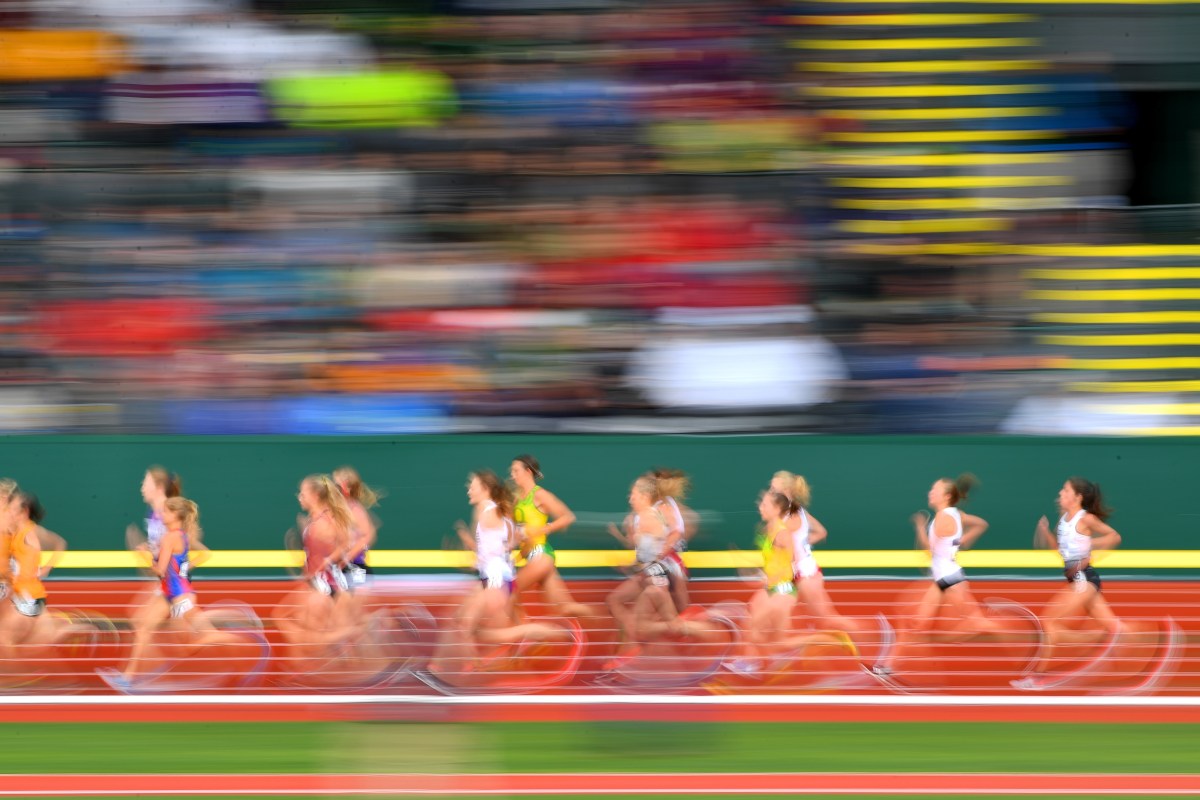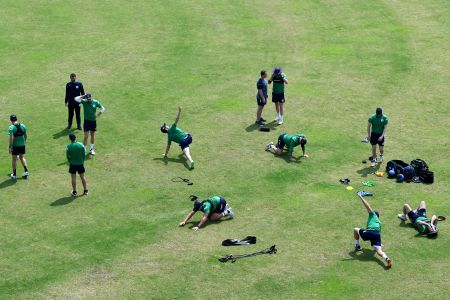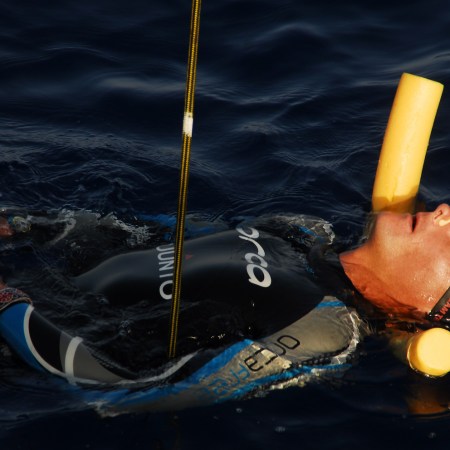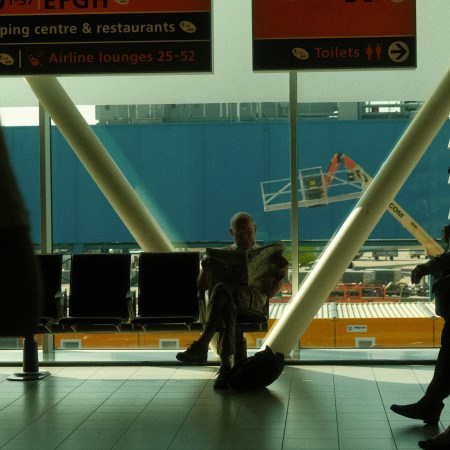Despite exercising regularly, I often feel like a fitness poser because I’m terrible at running. Any attempt to do so growing up turned into me trying to convince my parents I had sports asthma, when I simply didn’t know how to control my breath.
It wasn’t until my 30s that I ran a full mile without giving up and walking part of the way, and only after much judgment from a fit friend who I vulnerably admitted this to while masquerading in activewear. Ultimately, the only way I could make it through a full mile without hyperventilating was by trotting at an excruciatingly slow pace, clocking just under a 12-minute mile. I’m so bad at running that I dusted off my Facebook login and password to join a slow runners community group. Anything to feel better about my exercising imposter syndrome.
And yet every spring, I think “this is the year I’m going to run an 11-minute mile” is a very attainable goal for someone who hasn’t been in a battle with the activity for most of their lives. Then my body responds with “no you’re not” and I scream in soreness for days after trying. Research shows that running slows down even more with age, so eventually I enlisted help from elsewhere, hoping that a device like Firefly Recovery might buy me some time.
Firefly claims to increase blood flow by 400 percent and significantly reduce recovery time by using Neuromuscular Electrical Stimulation (or NMES), to stimulate the perineal nerve in your leg. It sounds complicated, but only involves two straps placed below the knee, and plus/minus buttons to turn the strip on, up, down, and off.
In line with cryotherapy chambers, compression boots and massage guns, Firefly is part of a recent recovery-centered trend where resources once reserved for professional athletes are now available for the average person hitting the gym. Likewise, several clinical studies show that NMES devices increased microcirculation and reduced “perceived muscle soreness” more effectively compared to compression socks and boots. Other research indicates that NMES devices could improve recovery in athletes with lower limb injuries, along with reducing the risks of developing dangerous blood clots during long travel stints. However, it’s worth noting that these studies looked at NMES stimulation in general, rather than the Firefly specifically.
Even though Firefly has been used by elite squads such as the Chicago Bulls, Anaheim Ducks and the University of Alabama’s football team, compared to the other tools that cost anywhere from a few hundred to thousands of dollars, Firefly is far more accessible — running $98 for two sets of the device, along with protective knee straps, or $47 for a single set.
“It is actually possible to boost recovery periods with such devices, as they work on improving blood circulation and blood flow, which helps with improving recovery,” John Gardner, a personal trainer who is not affiliated with Firefly Recovery, assured me. That said, just because it’s possible, doesn’t mean it is really important for the average exerciser like me.
“Speeding up the recovery process for non-athletes by using devices isn’t necessarily needed,” Garder explained.
Since I find running entirely unnecessary in itself, the Firefly seemed like a perfect match for improving my tumultuous relationship with the activity. If nothing else, it was a good excuse to see if my knees would hold up with a little electricity behind them after using the Firefly for three weeks.
Firefly: Take One
The starter pack contained the two sets of Fireflies and straps, along with an insert of instructions on how to use it — for either warming up, travel, training recovery, or overall soreness after a workout. Depending on your goals, you can use Firefly for anywhere from 30 minutes to four hours at a time. Each Firefly has 30 hours of battery before it needs to be replaced.
Using the Firefly is fairly intuitive, but they have several instructional videos as well, so you can make sure you’re securing the strap correctly.
The first thing I noticed once I turned on the device was that the electric stimulation caused my legs to lightly kick. This is a desired effect, something the company refers to as the “Firefly flutter.” Honestly, this was my favorite part, especially for a quick warmup after stretching, while you hydrate. For me, one of the greater challenges when it comes to working out is getting started, but getting my blood pumping prior was the exact push I needed to get out the door for my first run of the season.
I was so excited to use the Firefly that I forgot to get new running shoes, and was stuck with my worn out Nikes that I should’ve replaced long before last year. For the sake of the experiment, I pressed on with a short mile run and I finished at 12:24 with a stomach ache. (To me, running sometimes feels like shaking your bowels up like they’re a bottle of champagne.)
As instructed, I turned the Firefly back on for another hour after my run, and the flutter made me hopeful I wouldn’t feel too banged up the next day.
The Second Flight
It may have been the boosted circulation, my slow trot, or the fact that I was running a mere mile, but I was not too sore the next few days. Given that the Firefly is intended to be used for all types of training, I decided to vary my workouts for the next few days, opting for exercises that appealed to me more.
I used Firefly before and after two 30-minute high intensity interval training sessions, courtesy of Nike Training Club on Netflix. Although I work out about four to five days a week, I’ve found shorter workouts throughout the day works best for me. Consequently, it doesn’t take more than a 30 minute HIIT class to feel it the next day, let alone two.
The Firefly didn’t work miracles, but again, I wasn’t as sore as I predicted. Plus, I had the device available to slap back on the next day, without having to wait for it to charge. After an hour of fluttering, and a lot of water, I was ready for a nap.
Ultimately, rest, water and a lot of other simple tactics are far more important yet underrated recovery tools. “Relevant for all levels of fitness is the need to get enough sleep, hydration, and of course, adequate nutrition to ensure adequate recovery from any and all training stimulus,” nutritionist and fitness coach Ben Brown said.
But as long as I wasn’t using the Firefly to compensate for any of these basic recovery needs, a little electric stimulation and added circulation couldn’t hurt, I assumed. So I chugged another glass of water when I woke up from my nap and slapped the Firefly back on for another hour while I made a healthy avocado and spinach salad with chicken for dinner, and a blueberry, banana and spinach smoothie for dessert.
This Chart Will Simplify Your “Recovery Fitness” Routine
Some strategies help heal the body. Others are a waste of time.Third Time’s the Charm
After an active recovery day where I only walked and did gentle yoga at home, I eased back into my routine with my favorite fitness activity of all: hot yoga. After using the Firefly for two separate hour sessions during my rest day, I used it to warm up for 30 minutes before heading to 60 minutes of bikram style hot yoga — a predictable pattern I have memorized by now, but I still feel it in my body enough the next day to qualify it as a real workout. (Of course, the 105°F degree heat helps with that.)
Post-yoga, I fluttered with the Firefly for about an hour. By the following day, I felt fully recovered and ready to run, this time with a new pair of Brooks Revel 6 running shoes, about 45 minutes after using the device to warm up. This seemed sufficient for what proved to be a 12-minute workout and 10 minute cool-down walking home, as I wondered yet again why my stomach felt so funny.
Between week two and three, I realized that the Firefly’s strips were leaving a bit of a residue behind, which looked like the adhesive of a band-aid that had been left on too long. The stickiness was not ideal, and though it washed off easily, it made the product seem literally more tacky than it was. On top of being rendered unusable after 30 hours of use, the Firefly’s overall disposability was its biggest flaw. The velcro straps did hold the device in place as the adhesive strips wore away. But at the same time, it made me wonder if there was a way to build the technology into the cloth straps themselves, and streamline the overall product.
Regardless of this flaw, I was growing accustomed to making the Firefly a part of my warmup and cool down routine — even if my next mile came in at 12:01.
Four to Be Fair
Even though I didn’t beat my unimpressive time, I was feeling good enough after my run to rehydrate and rush over to a Sunday hot yoga class. I assumed it would be a good way to stretch out and recover, rather than a trap for overdoing it. By the time I got home, I knew I was wrong — I was wrecked.
“For someone who is starting out with fitness, recovery devices are not needed as they should not overtrain to allow their body to get into the habit of working out without reaching burnout,” Garder warned. “Challenging yourself and gradually increasing the pace allows beginners to sustain exercising and integrate it into their daily routine.”
As much as his use of the word “beginner” felt like a neg, he was right. Much like a lightning bug flying right into a tiki torch, the Firefly had me flying too close to the sun. Brown agreed that the “weekend warrior” who doesn’t workout much and goes hard every once in a while “is going to be relegated to unnecessary and limiting amounts of muscle soreness and therefore, might actually be setting themselves back,” he warned. “Instead, that same person who can realistically infuse smaller amounts of physical activity, more frequently, will provide both more appropriate stimulus as well as faster recovery and have a bigger advantage.”
Still, I wore the Firefly for several hours while I groaned through walking my dog, stretching, and hydrating the next day. Typically, when I overexert myself, it takes two days to recover. Whether it was pride, the placebo effect, or increased circulation from the Firefly, I was ready for another slow run after a day or rest. And unsurprisingly, it was a luxurious 12:11 mile, in line with my other leisurely times.
In the end, the Firefly may increase your circulation and potentially recovery time, but it cannot work miracles. And although I will happily use it for the remaining hours I have in the battery that are left, once it ceases to flutter, I probably will revert back to using water, stretching and rest as my recovery tools.
There is something to be said for how a device like the Firefly can bring some novelty into a workout that you have struggled to tackle and are simply getting bored with. But that makes devices like this more of a toy to boost motivation than a tool to make any seismic changes to your fitness levels. But as long as you’re not using the electrical stimulation with the expectation of going from a slow-runner to a star athlete, go ahead and try this at home. You’ll likely lap me.
The Charge will help you move better, think clearer and stay in the game longer. Subscribe to our wellness newsletter today.


























